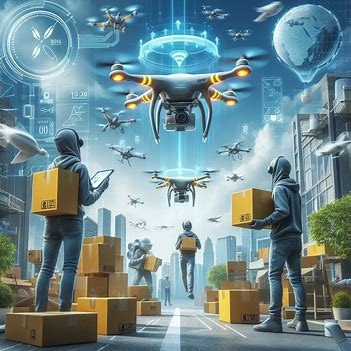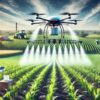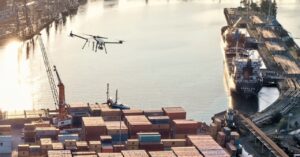
Drones: Revolutionizing Logistics and Disaster Management
In an era of rapid technological advancement, drones have emerged as a transformative force in two critical domains: logistics and disaster management. These unmanned aerial vehicles are reshaping the landscape of last-mile delivery and providing invaluable support in crisis situations, offering solutions that were once deemed impractical or impossible.
Logistics Revolution: The Sky's the Limit
The logistics industry has long grappled with the challenges of last-mile delivery, often considered the most inefficient and costly segment of the supply chain. Enter drones, the harbingers of a new era in package delivery.

Amazon, the e-commerce behemoth, has been at the forefront of this revolution with its Prime Air initiative. In 2016, Amazon completed its first autonomous drone delivery in Cambridge, UK, delivering a package to a customer just 13 minutes after the order was placed. This groundbreaking achievement heralded a future where rapid, on-demand delivery could become the norm rather than the exception.
However, it’s not just tech giants making strides in drone logistics. Zipline, a California-based startup, has been operating a nationwide medical drone delivery network in Rwanda since 2016. In a country where poor road infrastructure often hinders timely medical care, Zipline’s drones have been a game-changer. They deliver blood, vaccines, and other critical medical supplies to remote health facilities in as little as 15 minutes, dramatically reducing delivery times from hours or even days.
In 2020, amid the COVID-19 pandemic, Zipline expanded its operations to Ghana, delivering COVID-19 test samples from rural areas to urban laboratories. This innovative application of drone technology not only expedited testing but also minimized human contact, reducing the risk of virus transmission.
Disaster Management: A Bird’s Eye View of Hope
When disaster strikes, every second counts. Drones have proven to be invaluable assets in disaster management and relief efforts, offering rapid assessment capabilities and delivering aid to areas inaccessible by traditional means.
A poignant example of drones’ potential in disaster response unfolded in the aftermath of Hurricane Dorian in 2019. The category 5 hurricane devastated the Bahamas, leaving many areas cut off from aid. In this dire situation, Volans-i, a drone delivery company, partnered with Dorian Drone Disaster Mapping Mission to conduct critical post-hurricane operations.
Using long-range drones capable of carrying payloads up to 9 kg, Volans-i delivered essential supplies to isolated communities. These drones navigated treacherous conditions, flying over flooded areas and debris-strewn landscapes to reach those in need. Moreover, they conducted aerial surveys, providing real-time data to rescue teams and aid organizations, enabling more efficient and targeted relief efforts.
In another remarkable instance, during the 2023 wildfires in Hawaii, drones equipped with thermal imaging cameras were deployed to detect hotspots and track fire progression. This technology allowed firefighters to strategically allocate resources and predict the fire’s path, potentially saving countless lives and properties.
Soaring Towards a Connected Future
The integration of drones into logistics and disaster management represents a paradigm shift in how we approach age-old challenges. From reducing delivery times and costs in the e-commerce sector to providing life-saving assistance in crisis situations, drones are proving to be versatile and indispensable tools.
As we look to the future, the potential applications of drone technology seem boundless. However, this rapid advancement also brings forth new challenges, including airspace regulation, privacy concerns, and the need for robust infrastructure to support widespread drone operations.
Despite these hurdles, the trajectory is clear: drones are no longer a futuristic concept but a present reality, reshaping industries and saving lives. As technology continues to evolve, we can anticipate even more innovative applications of drones, further revolutionizing logistics and disaster response.
In this brave new world of aerial innovation, one thing is certain: the sky is no longer the limit—it’s the new frontier of possibility.





